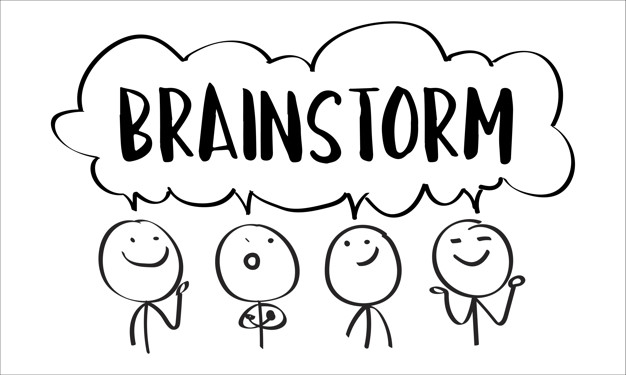
Infomercials are on all the time, although they seem to appear more often late at night after the bars have closed. They’re talking about ways to build muscle from strengthening our calves by riding a stationary bike or getting our forearms to look like Popeye’s by curling dumbbells. However, there is one muscle the infomercials fail to mention.
The brain.
Even though your brain is not technically called a muscle, the intricate cellular structure operates in the same our other muscles do. More importantly, our brains need to be worked out daily if we want to contribute ideas in the workplace.
Before we review a few brainstorming techniques that can turn you into an idea machine, let’s see what derails brainstorming sessions and learn about the benefits of team brainstorming.
Factors That Derail Brainstorming Sessions

From distractions just outside the meeting room door to cell phones chiming every few seconds, several factors can derail a brainstorming session.
Lack of Preparation
Have you ever been in a room full of awkward silence? Most of us have and the reason for that is most if not all of the participants came to a meeting unprepared. Lack of preparation inhibits new ideas, which creates a stagnant work environment.
A Few Do All the Talking

It is bound to happen at some point in your career. A few of your extroverted professional peers dominate the discussion during a brainstorming session. The result is that even though the other participants have something to add to the conversation, they keep their ideas to themselves.
Anchored Ideas
In the rush to generate ideas, only the first couple of ideas gain traction in what many brainstorming experts refer to as the “anchoring effect.” All other ideas diminish in importance, which stifles innovation and creativity.
Benefits of Team Brainstorming

The most important benefit of brainstorming is the development of new ideas or the refinement of ideas that were brought up in a previous brainstorming session. However, if your team conducts brainstorming sessions properly, you should be able to realize several other benefits.
- Improve the morale of the group
- Tie together diverse perspectives
- Encourage creative thinking
- Generate a large volume of ideas
The last benefit is especially important. Think of brainstorming as you view a faucet. Turn the faucet on and water comes out. Start generating a few ideas and what was once a trickle of thoughts can morph into a flood of ideas.
Five Brainstorming Techniques to Turn You into an Idea Machine

Brainstorming typically involves three steps: idea, discussion, selection. Each of the following five methods of brainstorming can keep you on the path towards solving difficult problems.
1: The More, the Merrier
This technique relies on the principle that generating a large number of ideas leads to the selection of a couple of new ideas. Everyone attending the brainstorming session writes down as many ideas as they can within a short period. Then, discussion and selection follow to produce the best ideas that solve a particular problem.
2: Put Yourself in Someone Else’s Shoes

The group chooses a well-known person, whether the person is fictional or non-fictional, and asks the question, “How would that person approach a problem.” The person that you select can be your manager, a well-known public figure, or a popular character from a book or movie.
3: Zoom It
Another reason why some brainstorming sessions fail is that some, if not most of the participants are not comfortable exchanging ideas face-to-face. Instead, they prefer to interact on a platform such as Zoom or Slack to exchange ideas. This technique is effective for brainstorming with professional peers located across the country and the world.
4: Climbing a Ladder

Although considered a more complex way to brainstorm, the ladder technique ensures the group does not rely on just the first couple of ideas that are introduced during a session. Two members of your team stay in the room to brainstorm ideas. After a five-minute interval, a third team member joins the discussion. Continue introducing team members every five minutes to generate new ideas or improve the ideas already shared by the group.
5: Out of the Office
Sometimes, a sterile environment like an office meeting room stifles innovation and creativity. Instead of coming to a screeching halt with the development of new ideas, consider taking your brainstorming session somewhere else. A change of scenery can immediately turn back on the idea machine. Whether you choose a popular restaurant or get away from it all at a state park, the point is to prevent repetition from turning inspired idea machines into uninspired workers.
Bonus Technique

Sometimes, all you need is a little push to get back on track with generating ideas. According to Braincat.com their brainstorming tool can save you hours of frustration because the idea spigot has turned off in your brain. Though it is more than a brainstorming tool, it’s more of an organizational tool, the brainstorming portion of its process is quite noteworthy. Whether manage complicated projects or need to get rid of writer’s block, the Braincat tool can produce more quality ideas in less time.












